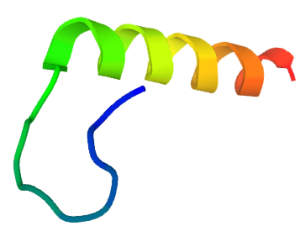Peptide library is increasingly used to define antibody epitopes and substrate specificities of protein kinases. For epitope mapping, overlapping peptides are made to span the antigenic protein sequence. The antigenic determinant recognized by a monoclonal antibody can then be screened and defined. The alanine scanning method can also be used to assess that residue’s contribution to antibody binding and to determine which substitutions affect antibody recognition (mutational analysis). Unrelated synthetic peptides can be used to evaluate the antibody cross-reactivity.
Peptide by LifeTein Cited in Cell
Overlapping peptides from LifeTein were used to map the region of Fragment 3 by epitope mapping of anti-Fzd2 antibody. This anti-Fzd2 antibody was found to reduce tumor growth. Wnt signaling plays a critical role in colorectal cancer. Researchers found that Wnt receptor Frizzled2 (Fzd2) and its ligands Wnt5a/b are elevated in metastatic liver, lung, colon, and breast cancer cell lines. Their high level expression correlates with markers of epithelial-mesenchymal transition (EMT). By epitope mapping using synthetic peptides from LifeTein, the researchers mapped the epitope to a specific region. The antibody to Fzd2 was found to reduce cell migration and invasion. Targeting this pathway may provide a cure for patients with tumors expressing high amount of Fzd2 and Wnt5a/b. We have developed an antibody to Fzd2 that reduces cell migration and invasion and inhibits tumor growth and metastasis in xenografts. We propose that targeting this pathway could provide benefit for patients with tumors expressing high levels of Fzd2 and Wnt5a/b.
Peptide Synthesis Home Page
Our Services:
COVID-19 Services & Products Custom Antibody Services Rush Peptide Synthesis Peptide Nucleic Acids (PNAs) Custom Peptide Synthesis Services Gene Synthesis Service Custom Chemical Synthesis Other Posts:
Phospho-specific antibodies by LifeTein published in Nature Synthesis of multiple antigenic peptides: strategies and limitations The Structural Basis of Peptide-Protein Binding Strategies Synthetic Peptides Used for indirect ELISA
